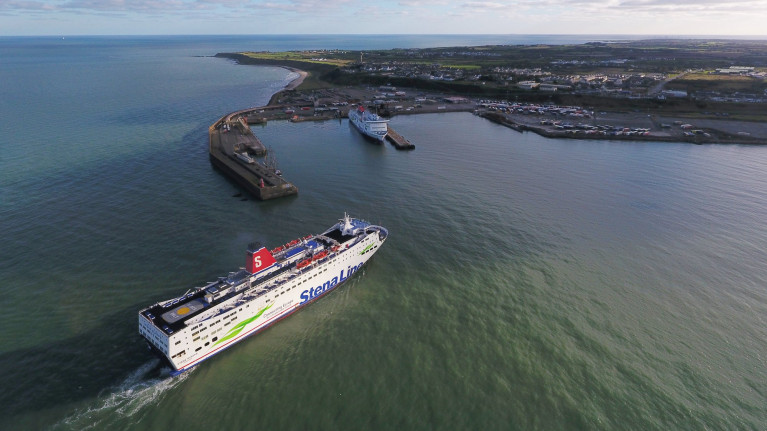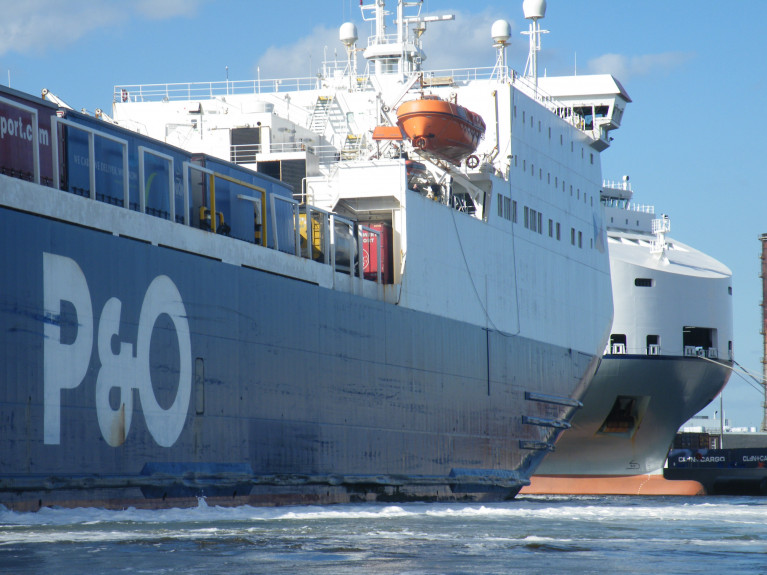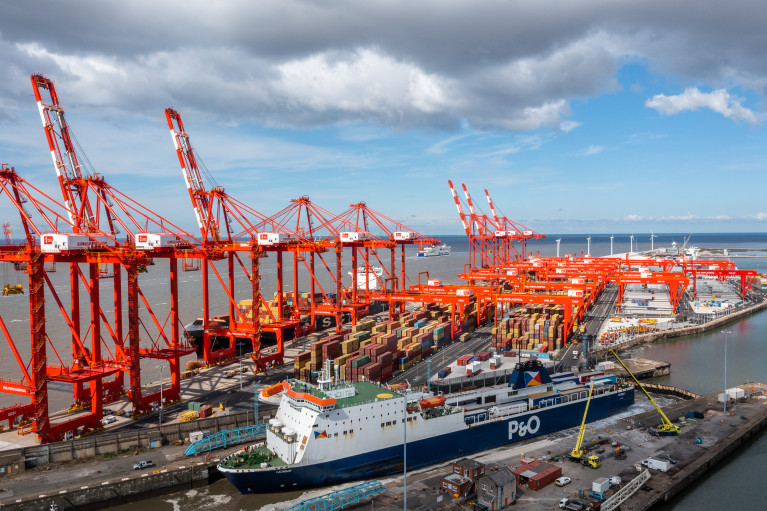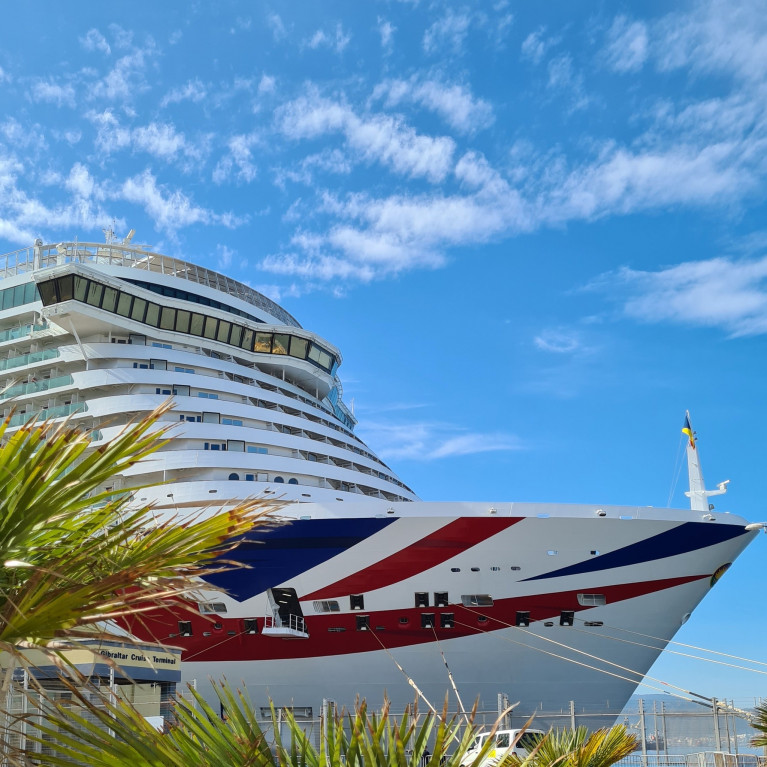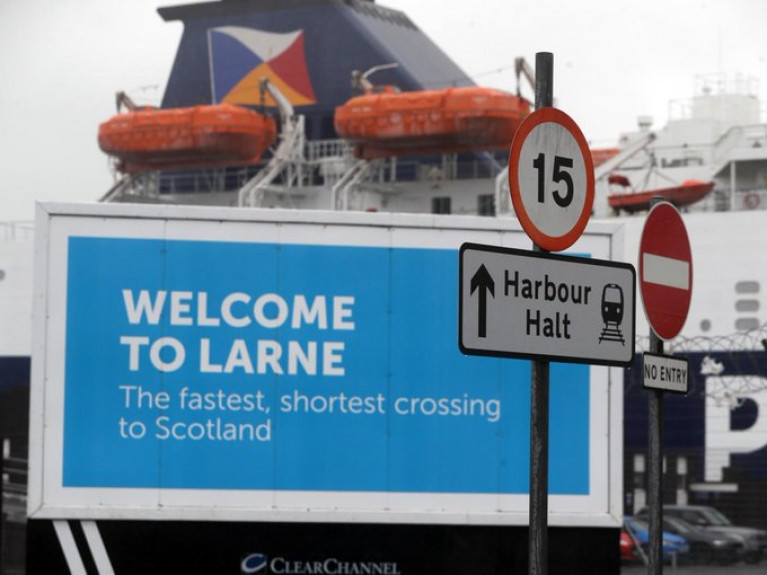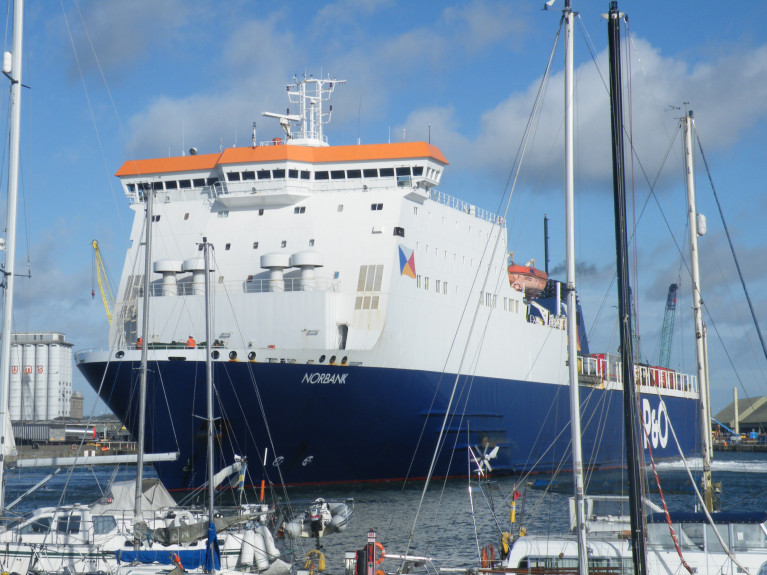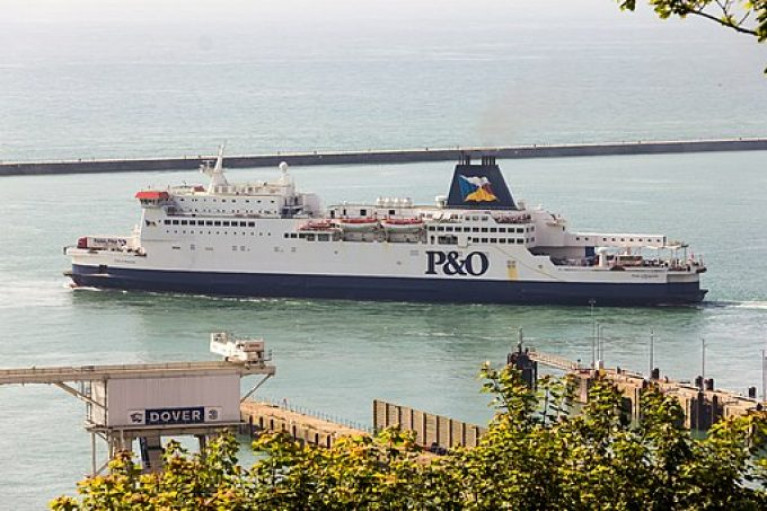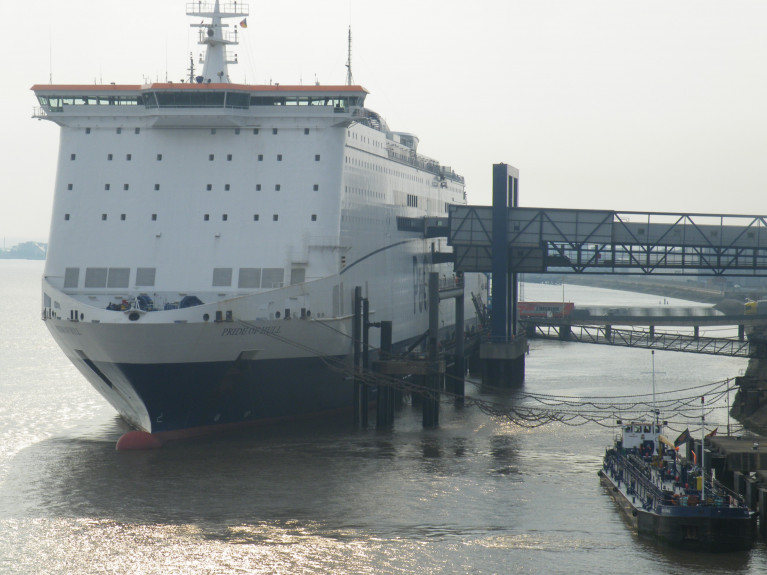Displaying items by tag: P&O Ferries
Ferry Firm P&O Plans to Resume Sailings after Sacking 800 Crew & Replace With Cheaper Agency Staff
The operator P&O Ferries has announced it is preparing to restart sailings “from this weekend” on routes suspended since it sacked nearly 800 seafarers.
As Independent.ie writes, the firm revealed plans to resume operations for four of its ships.
It has been prevented from running all but one of its vessels since it announced widespread redundancies on March 17.
It has already resumed Dublin to Liverpool sailings.
The company sparked outrage by replacing its crews with cheaper agency workers, without notice.
A spokesman for the firm said: “From this weekend, P&O Ferries are getting ready to resume services across a number of vital routes.
“P&O has been working closely with regulators to ensure our ships are safe to sail.
“P&O is looking forward to welcoming back vital services and we expect to have two of our vessels ready to sail on the Dover/Calais route by next week, subject to regulatory sign-off, namely both the Pride of Kent and Spirit of Britain between Dover/Calais.
More from the newspaper in addition BBC News coverage on the Strait of Dover service as the ferries will need to pass inspections by the Maritime Coastguard Agency (MCA) before services can resume.
Operator Stena Line Forced to Suspend Rosslare-Fishguard Route to Plug Gap Left by P&O in Larne
Ferry company Stena Line has been forced to suspend sailings between Rosslare and Fishguard until 12 April, to plug gap left by P&O Ferries between Larne and Cairnryan.
As ITV news reports, P&O’s two ships – the European Causeway and the European Highlander – haven’t sailed on the route since the company sacked all 800 staff on St Patrick’s Day.
It caused a freight backlog on a key route used to bring goods into Northern Ireland.
As a result, Stena Line moved the Stena Nordica onto the route as an extra freight ship from its (temporary) Dublin to Holyhead service.
It was replaced on that route by the Stena Europe – which had been sailing between Rosslare-Fishguard.
Afloat.ie adds Stena Europe has since last month, operated as second ship on the Dublin-Holyhead route along with Stena Adventurer. This led to the route's other routine ferry, Stena Estrid to transfer to the Rosslare-Cherbourg route
While the Ireland-France route ferry Stena Horizon dry-docks at Harland & Wolff, Belfast, as alluded in the ITV coverage which has more.
Criminal Probe P&O Ferries Face Over Sackings
Operator P&O Ferries faces a probe, reports BBC News, into the controversial no-notice sackings of nearly 800 members of staff.
The Insolvency Service has launched criminal and civil investigations into the circumstances around the redundancies.
In a letter, it said it would consider "prompt and appropriate action" if the law was broken.
Grant Shapps has also asked the service to consider disqualifying its boss from acting as a company director.
The transport secretary made the announcement as part of new pay plans for the ferry industry this week after P&O Ferries sacked 786 employees without notice and replaced with them with agency workers.
P&O Ferries said on Friday that all but one of the sacked employees had taken steps to accept the redundancy offer made by the company. One former P&O worker, John Lansdown, told the BBC he did not respond to the company's offer.
The company declined to comment on the Insolvency Service's investigation when approached by BBC News.
Business Secretary Kwasi Kwarteng tweeted that he and Mr Shapps would follow the new investigations into P&O Ferries closely as they develop.
Click here for much more.
The ports industry in the UK has described as “unworkable” ministers’ plans to ask port operators to block ferries with crews paid less than the minimum wage, the government’s signature policy response to outrage over the sacking of 800 workers without consultation by P&O Ferries.
The transport minister, Grant Shapps, told parliament on Wednesday that the government would write to the operators of British ports telling them to refuse access to companies that did not pay the UK minimum rate, in a move explicitly addressed at P&O.
He also outlined plans to create “minimum wage corridors” on ferry routes between the UK and Denmark, France, Germany and Ireland.
However, the ports industry immediately said it would be unable to carry out Shapps’s policy.
Richard Ballantyne, the chief executive of the British Ports Association, said: “While it’s right the government and the ferry industry look to improve employment rules and standards, the expectation that port authorities will need to enforce minimum wage rules in the shipping sector could be unworkable. This will place ports in a difficult legal predicament, especially before any legislation is in place.
The RMT union, which represents ship workers, said it was “too little, too late”, and questioned whether the move would do anything to force P&O Ferries to reinstate the workers, many of whom are thought to have been paid more than the UK minimum wage before they were sacked.
More from The Guardian on the BPA's response to the UK government's proposal.
P&O Cruises Based in Southampton Is Forced to Clarify it is Not Linked to P&O Ferries
The brand P&O Cruises, owned by Carnival Corporation & PLC, is faced with a growing tirade of abuse as the British public mistakes it for P&O Ferries which Afloat adds is owned by DP World based in Dubai, United Arab Emirates.
As ITV News reports, the Southampton based cruise company has been forced to clarify its relationship with P&O Ferries which as Afloat previously reported fired 800 seafarers on Thursday.
On its website and social media channels the company said: "P&O Cruises is part of Carnival Corporation & PLC and as such is entirely unrelated to P&O Ferries."
"Our thoughts go out to all those affected by yesterday’s news. However, please be assured it’s business as usual on our cruises and our crew look forward to welcoming you on board soon."
It was originally a subsidiary of the shipping company P&O and was founded during a restructuring of P&O's operations in 1977.
P&O Cruises was divested from P&O in 2000, becoming a subsidiary of P&O Princess Cruises. In 2003 the company merged with Carnival Corporation.
More on the story here and Afloat's coverage of Iona, their biggest cruiseship built for the UK market which entered service almost a year ago.
Operator, P&O Ferries has paused its services "in preparation for a company announcement" later on Thursday.
The ferry operator said it was not going into liquidation but all ferries had been instructed to stay in port.
Union RMT urged the firm to protect jobs amid speculation that hundreds of crewmembers could "be sacked and replaced with foreign labour".
Some sailings scheduled for today have been cancelled, with passengers told to use other companies.
P&O services scheduled today include 14 between Dover and Calais, three between Liverpool and Dublin and seven between Larne in County Antrim and Cairnryan in Dumfries and Galloway.
BBC News has further coverage of this ferry development.
P&O Ferries restored a fifth ship service on the Dover-Calais route, with the recent arrival of Pride of Burgundy at the Port of Dover, this follows new competition from Irish Ferries which last week launched UK-France sailings.
As MultiModal reports, the return of P&O's 28,000-ton Pride of Burgundy, with its first sailing in over a year, brings additional capacity to carry 120 lorries in freight-only mode, making two return journeys each day. The addition of a fifth ship comes in response to growing demand from British and European customers and will expand options for those requiring rapid and reliable transportation of goods between pivotal markets.
First announced in April, the Pride of Burgundy’s return, follows P&O Ferries’ ground-breaking space sharing agreement (with operator DFDS) on the Dover-Calais route, and the introduction of a second lift-on lift-off (LOLO) ship to double capacity between Hull-Zeebrugge.
Peter Hebblethwaite, Managing Director of P&O Ferries, said: “I am delighted to see the restoration of our Dover-Calais fleet to its pre-pandemic strength of five, with the resulting increase in departures and frequency enabling us to take back market leadership on the English Channel and further improve our customer service. Pride of Burgundy will reinforce our cost-effective freight service by increasing capacity and flexibility on the route – a vital artery of trade upon which thousands of businesses and consumers rely.
“With the support of our parent company, DP World, the world’s leading provider of smart logistics solutions, we are committed to bolstering our offering to customers and ensuring optimal efficiency in the flow of goods between the UK and Europe. With international trade at the heart of economic recovery, continual investment in our Dover-Calais route will encourage supply chain resilience by connecting people, businesses and nations.”
An Irish Sea ferry was among those at UK shipyards on England's North Sea coast, where A&P North East's Tyne and Tees faclities reported a strong two-month period.
Afloat adds the ferry, ro pax Norbank, which P&O Ferries operates on the Dublin-Liverpool link, had called for annual docking, while twin Norbay and chartered in freight-only vessel, Stena Forcaster continued sailings.
Also in April, the same ferry owner's, Pride of Kent, a passenger ferry docked for steel repairs as part of its annual maintenance programme.
Asides A&P North East carrying out work on ferries, other ships in the form of tankers, dredgers and OSVs called on the business’s engineering and ship repair expertise.
According to the shipyard team, currently at the facility is Prysmian’s cable laying barge, Ulisse, after a successful dry docking period for a special survey. In addition docked on the Tyne, the diving support vessel Boka Polaris for a change of owners’ livery.
Scottish-based Northlink Ferries (see CMAL acquired) has also selected A&P North East to carry out a number of small repairs to ro-ro MV Helier when the freighter visits later this month.
A number of mobilisations have also been delivered including the Normand Samson in the Port of Tyne as well as the Olympic Triton and Zwerver I in Teesside.
The Tyne-based team is also preparing to begin mobilisation work for Prysmian’s Da Vinci, described as the most capable cable layer with the highest carousel capability on the market.
Over at A&P Tees, the last few months have seen the team deliver annual dockings for the City of Westminster, Arco Dijk and Sand Falcon dredgers as well as a growing number of offshore vessels thanks to the facility’s proximity to the North Sea. The most recent project was for North Star Shipping’s Grampian Sovereign.
Other projects have included a Condition Assessment Programme (CAP) survey for the tanker vessel Mersey Fisher, routine maintenance work for Briggs Marine’s Forth Atlas barge and Forth Warrior tug, and a return maintenance visit from PD Teesport’s Cleveland County.
Speaking about the recent successes at both North East facilities Chris Davies, Business Development Manager for Marine at A&P Group said: “The market is very buoyant right now and the location of our two North East facilities makes us well placed to capitalise on the available work. We are pleased to secure more work in the offshore sector at A&P Tees in particular, and to leverage the growing expertise and resource we have in this area.
“The successes of the last few months reflect the hard work and dedication of our team throughout the pandemic and our long-standing relationships with clients and their returning vessels.”
As Irish Ferries is to become a rival to P&O Ferries on the Dover-Calais market, the ferry firm is set to respond on the UK-France route by deploying a fifth vessel.
The DP World-owned company announced its ro-pax Pride of Burgundy vessel would return to the route in June.
It’s a service the vessel operated for the best part of 26 years before P&O Ferries reduced capacity in response to the pandemic and the cessation of cross-Channel passenger traffic.
More from The Loadstar here.
P&O Cruiseferry Giant on UK-EU 'Landbridge' Route Returns to Humber after Engine Room Fire
P&O Ferries operator on the Irish Sea in addition to a North Sea 'landbridge' link to mainland Europe served by Pride of Hull was stranded with almost 300 passengers on board after an engine room fire.
The fire took place on board the Pride of Hull which was reported about 21:00 BST on Tuesday, said HM Coastguard.
All 264 passengers and crew are safe aboard the ferry travelling from Hull to Rotterdam.
It is anchored in the River Humber (see Pre-Brexit) following the fire, the coastguard added.
P&O Ferries said it would return the ship to port later and assess the damage after a fire in one of the engine rooms.
An Associated British Ports spokesman said: "We continue to support the ship and will be assisting in her safe return to the Port of Hull as soon as possible."
BBC News has further details of the incident.
Afloat adds as of this afternoon, Pride of Hull berthed at its routine Humberside terminal (see photo above). Sister Pride of Rotterdam belong to some of the largest cruiseferries operating in Europe and worldwide with each ship of almost 60,000 gross registered tonnage, noting Irish Ferries W. B. Yeats is 54,975.
A pair of P&O ropax ferries currently on the Irish Sea, Norbay and Norbank had served Hull-Rotterdam though firstly for operator North Sea Ferries, a subsidiary of P&O Ferries.
In 2002 the ropax twins transferred to the Dublin-Liverpool route where running since the summer is the chartered in freight-only Misida, as Afloat previously reported.





























